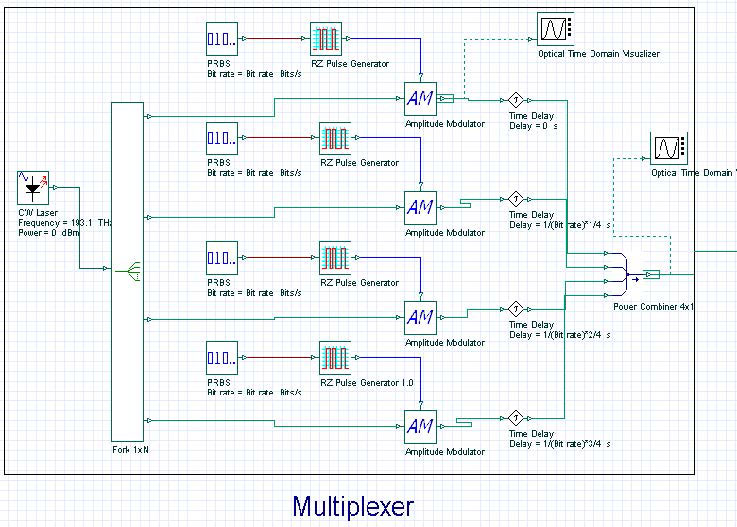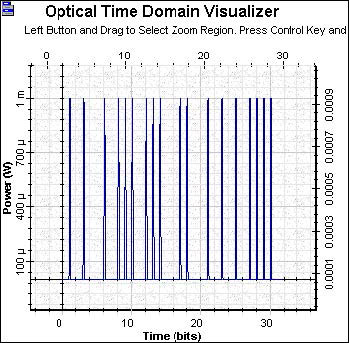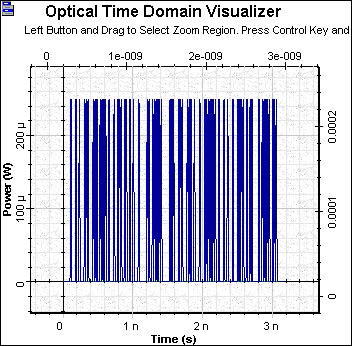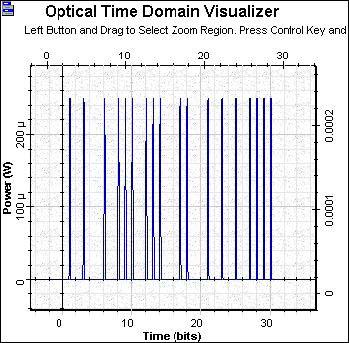In optical time-division multiplexing (OTDM) systems, several optical signal modulated at the bit rate B using the same carrier frequency are multiplexed optically to form a composite optical signal at a bit rate NB, where N is the number of multiplexed optical channels. OTDM Multiplexer.osd (see Figure 5) shows an OTDM transmitter.
Figure 5: OTDM Multiplexer
Each modulator generates short pulses with 10 GB/s bit rate, the pulse 3 dB pulse width is 0.05 bit period (see Figure 6).
Figure 6: OTDM 10 GBs
The signals are combined in order to generate an 40 GB/s bit rate at the multiplexer output (see Figure 7).
Figure 7: OTDM 40 GBs





